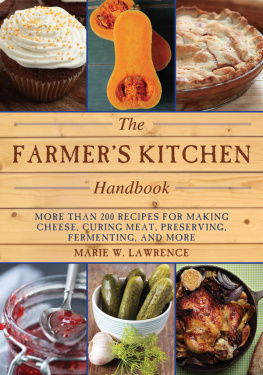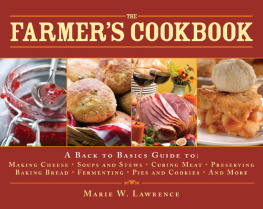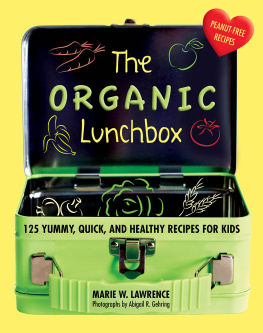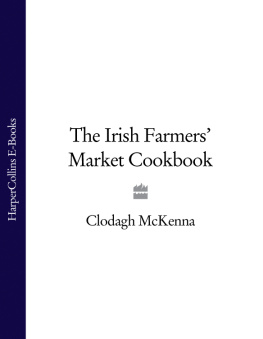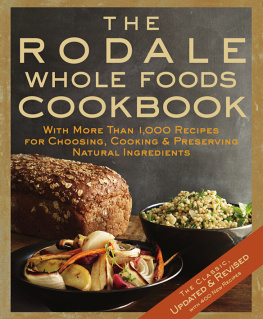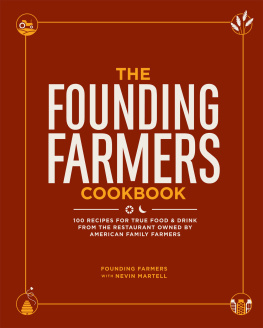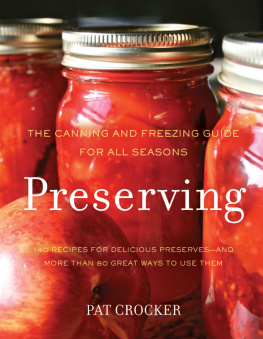THE FARMERS KITCHEN HANDBOOK
Copyright 2014 by Marie W. Lawrence
All Rights Reserved. No part of this book may be reproduced in any manner without the express written consent of the publisher, except in the case of brief excerpts in critical reviews or articles. All inquiries should be addressed to Skyhorse Publishing, 307 West 36th Street, 11th Floor, New York, NY 10018.
Skyhorse Publishing books may be purchased in bulk at special discounts for sales promotion, corporate gifts, fund-raising, or educational purposes. Special editions can also be created to specifications. For details, contact the Special Sales Department, Skyhorse Publishing, 307 West 36th Street, 11th Floor, New York, NY 10018 or .
Skyhorse and Skyhorse Publishing are registered trademarks of Skyhorse Publishing, Inc., a Delaware corporation.
www.skyhorsepublishing.com
10 9 8 7 6 5 4 3 2 1
Library of Congress Cataloging-in-Publication Data is available on file.
ISBN: 978-1-62873-615-1
Printed in China
To my family, past, present, and future, with love... and for the farmer in each of us.
Contents
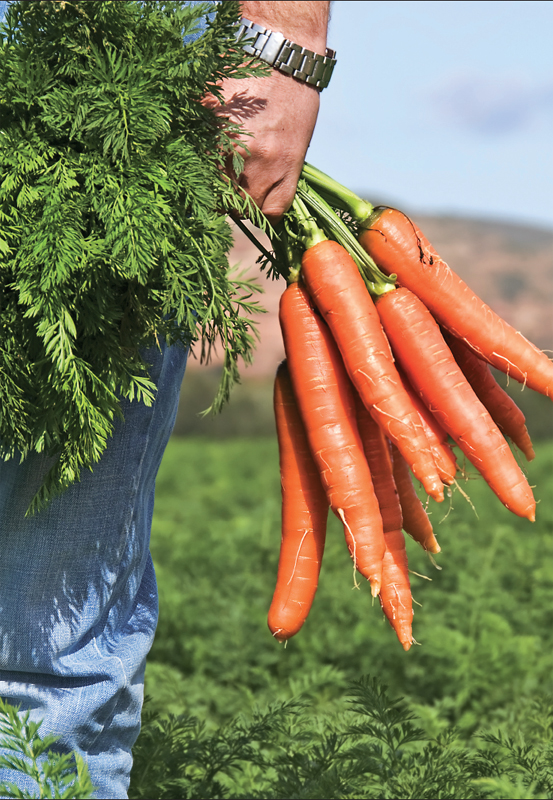

The Farmers Kitchen Handbook
Growing Up in Farm Country
W hen my parents decided to buy a piece of land out in the country, they did my brothers and me the biggest favor we could have imagined. We grew up in Vermont during the 1950s and 1960s, living a rural lifestyle that in many aspects has since disappeared. Folks in our neighborhood were, for the most part, either full-time farming families or those such as my parents who kept gardens; raised a few animals for meat, milk, or pets; and generally felt the benefits of living in the country far outweighed the drawbacks.
A country upbringing gives you an appreciation of fresh air, fresh water, and good, fresh food. You also learn to appreciate the long hours farm folk put in every day of the week to care for their animals, crops, and the land that sustains them (and us) all. Self-reliance and pride of a job well done go hand in hand in this profession.
Farming has been around this good green planet for a number of centuries now, and it is probably one of the most universal occupations in the world. It may take many forms, from tiny subsistence holdings in remote areas to immense factory farms that bear little resemblance to the family farmsteads of not so long ago. And a whole lot of it takes place outside of Vermont!

My parents, Evelyn and William Wheelock, circa 1935.
Although I have incorporated a few recipes with an international flavor, much of my perspective is from rural New England, land of my paternal grandfather. Youll also notice the influence of my immigrant grandparents, from Scotland, Sweden, and Finland. No matter what the origins of any recipe may be, this cookbook is about getting back to the basics in order to produce delicious food. I really like to know just what it is Im putting in my mouth before I eat it, and preparing food from scratch is a great way to figure that out. You dont have to spend a fortune at the grocery store in order to do this, although you do need to be willing to take a little bit of time. Understanding how to create your own homemade products can be pleasantly empowering and a lot of fun as well.
If youre able to grow a fair amount of your own food as I do, thats a wonderful thing. However, modern society being what it is, many folks no longer have this option. Fortunately for us all, even as some kinds of farming have slid by the wayside, other types are becoming more prevalent. Farmers markets are flourishing, and in many areas, there are local farm stands dotting the roadsides. If you happen to live in an urban area, dont despair. Community gardens and inner-city farmers markets are becoming more viable by the day. Even if all you have is a sunny window, you might just be able to grow a few herbs or some radishes. For when you get right down to it, theres a little bit of the farmer in us all.


General Cooking, Baking, and Preserving Guidelines
Safety First!
Safe Cooking Techniques for Eggs
The issue of possible salmonella contamination from eggs is a tricky one. Ingesting an undercooked salmonella-infected egg may cause unpleasant symptoms like nausea, vomiting, and intestinal cramping. The very young, very old, pregnant women and those with compromised immune systems carry the potential for more serious complications. Approximately one in every twenty thousand eggs may cntain salmonella. Although at one time the shells were considered the sole purveyor of this pathogen, there is now the slim chance a contaminated hen may carry it in her intestines or ovaries, in which case you could become ill from eating any part of the egg. Cooking your eggs to at least 160F is the safest solution. Ive read a number of articles on home-pasteurization techniques for eggs, several of which recommend coddling the whole eggs in the shell in water at a temperature of 150F for four minutes and then chilling them quickly. Im not sure what the safest technique is, although I strongly recommend not cutting corners when you purchase eggs. Commercially pasteurized eggs are available in some areas of the country, or if you raise your own chickens, youll be able to control such variables as growing conditions and freshness. Your chickens and the quality of the eggs they produce will depend on your good husbandry for their good health, and ultimately yours. If you purchase eggs, buy the freshest, best quality you can find and check that the shells are clean and solid. Refrigerate them promptly at 40F or cooler and maintain cooked eggs at 140F or higher for brief periods only.
Pasteurization of Milk
Commercially sold milk in this country is pasteurized, and with very good reason. Heating the milk to a minimum temperature for a given length of time effectively kills off disease-producing organisms and prolongs the shelf life of the milk. Milk used to be sold either pasteurized (with the cream still floating on the top) or homogenized (pasteurized milk, which had undergone a separate procedure to emulsify the milk and cream together). Over the years, dairy manufacturers have discovered a process called ultrapasteurization. Whereas regular pasteurization would require holding the milk at a steady temperature for about half an hour before chilling it down, ultrapasteurization heats the milk to a much higher initial temperature for a much shorter amount of time. While this saves time and may prolong the milks shelf life even longer, ultrapasteurization is a very mixed blessing. The higher temperatures used during this process alter the protein makeup of the milk, rendering it useless for making certain types of cheese, especially hard cheeses. Unfortunately for the home cheese maker, it is increasingly difficult to find milk that has not been ultrapasteurized. While I was constructing the cheese recipes in this book, I was able to purchase raw organic milk, which then I home-pasteurized. I placed the milk in a large double boiler, bringing the temperature to 150F, and held it there for a full half hour, making sure the temperature of the milk never dropped below that point the entire time. I then quick chilled it by placing the bowl of warm milk in an ice waterfilled kitchen sink. Once chilled, the milk was poured into clean bottles and refrigerated (never use same bottles the raw milk was collected in before washing and sterilizing them). I based my pasteurization time and temperature on information from various cheese-making books and extension service websites; if you choose to home-pasteurize milk, I would encourage you to do similar research and to be very sure of your milk source. Unfortunately, there is still so much concern about contamination of raw milk that it can be extremely difficult to obtain if you dont own your own dairy cows, goats, or sheep. If you dont have a milk source and really want to try the recipes for cheeses such as mozzarella or cheddar, do a little sleuthing and try to find milk that is pasteurized but not ultrapasteurized; smaller, more local microdairies would probably be your best bet. The milk will be more expensive, but in the end, the results will be worth it.

